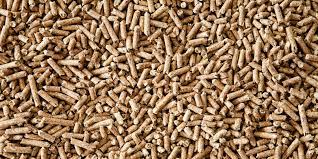
by Bill Schlesinger
When trees are used for biomass energy, they are first pelleted, then dried and shipped to a power plant—all energy consuming activities. When burned, all the carbon they contain is emitted to the atmosphere, essentially immediately. The wood pellets replace the fossil emissions from coal, but it takes 40 to 100 years of forest regrowth to balance the carbon dioxide emissions from burning these pellets—longer than the time for commitment to carbon neutrality by the nations using them.
Thus, burning wood pellets is a net source of carbon dioxide in the atmosphere for decades, and because wood has less energy per unit of carbon than coal (28.8 kWh/kgCO2 vs. 3.0 kWh/kgCO2), you must burn lots of it—that’s why we switched to coal hundreds of years ago. All this adds up—the emissions from drying, shipping, and burning wood, and the time to recapture the CO2—to make wood pellets a bad source of energy. As MIT’s John Sterman points out, for reducing CO2 in the atmosphere, one is always better letting an existing stand of trees grow and sequester carbon, than to harvest it for pellets, even if the overall region is showing a net increase in standing timber.
A lot has been said about carbon capture and storage—CCS, or BECCS (Biomass Energy with carbon capture and storage), in which the CO2 from burning wood is captured and injected below ground. In theory, BECCS offers a direct means to reduce CO2 concentrations in the atmosphere. The British Power Company DRAX has even proposed a BECCS plant in California to receives payments for its carbon sequestration.
Yet, BECCS is unproven; I do not know of the implementation of any BECCS scheme, at the scale of utility operations, that is in place and successful in capturing the magnitude of the CO2 generated. BECCS depends on appropriate geological formations to receive the CO2 and these are not always local. Pipeline shipping may be necessary. Overall, the energy used in BECCS adds about 30% to the carbon emissions to the atmosphere from burning biomass directly.
Overall, implementation of BECCS can cut CO2 emissions from biomass power in half, but it does not eliminate them. And the widespread implementation of BECCS would have an enormous impact on the amount of wild, forested land that will remain for wildlife.
References
Bakj, E., et al. 2018. Geospatial analysis of near-term potential for carbon-negative bioenergy in the United States. Proceedings of the National Academy of Sciences 115: 3290-3295.
Jonker, J.C.G, M. Junginger, and A. Faaj. 2014. Carbon payback period and carbon offset parity point of wood pellet production in the southeastern United States. Global Change Biology Bioenergy 6: 371-389.
Natural Resources Defense Council. 2021. A Biomass Bet. NRDC Fact Sheet.
Schlesinger, W.H. 2018. Are wood pellets a green fuel? Science 359: 1328-1329.
Sterman, J., W. Moomaw, J.N. Rooney-Varga and L. Siegel. 2022. Does wood bioenergy help or harm the climate. Bulletin of the Atomic Scientists 78 (3) , pp.128-138.